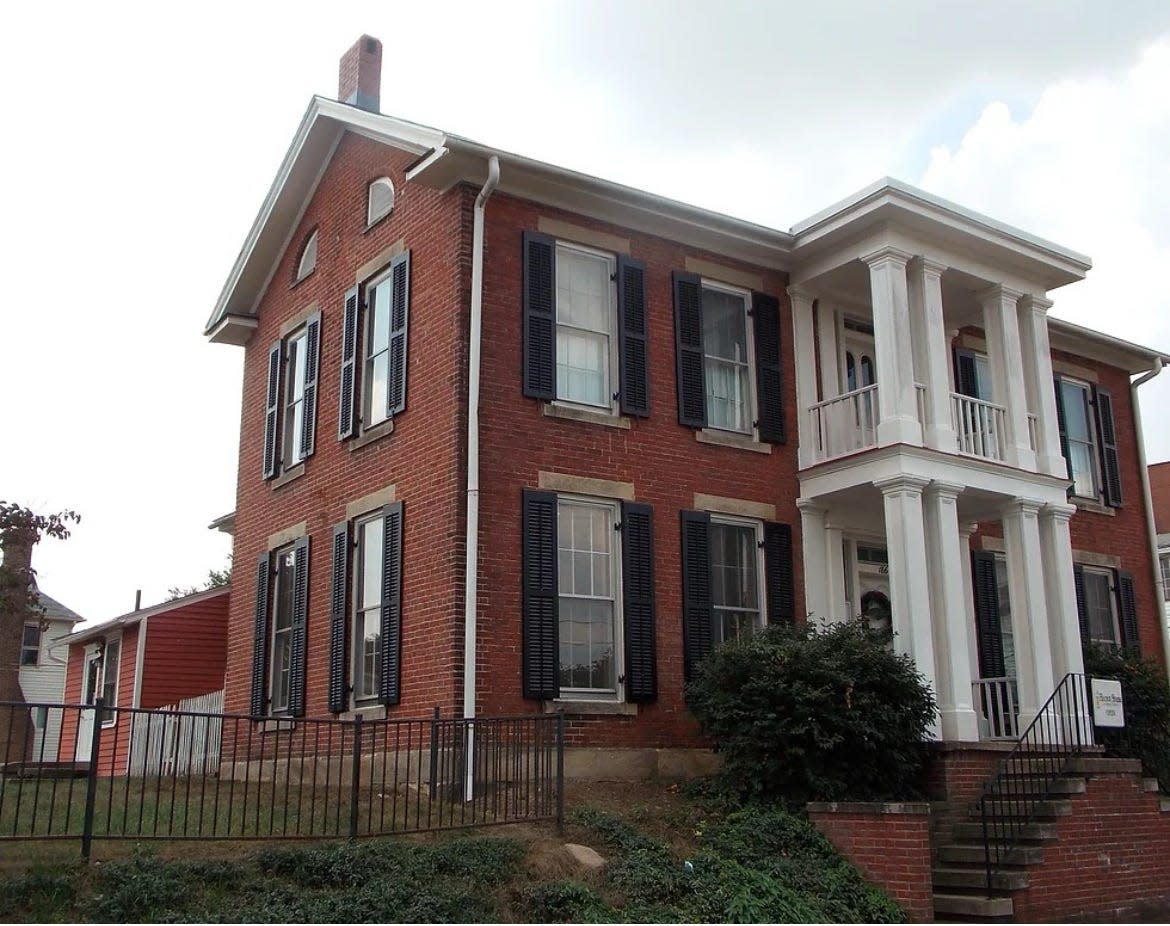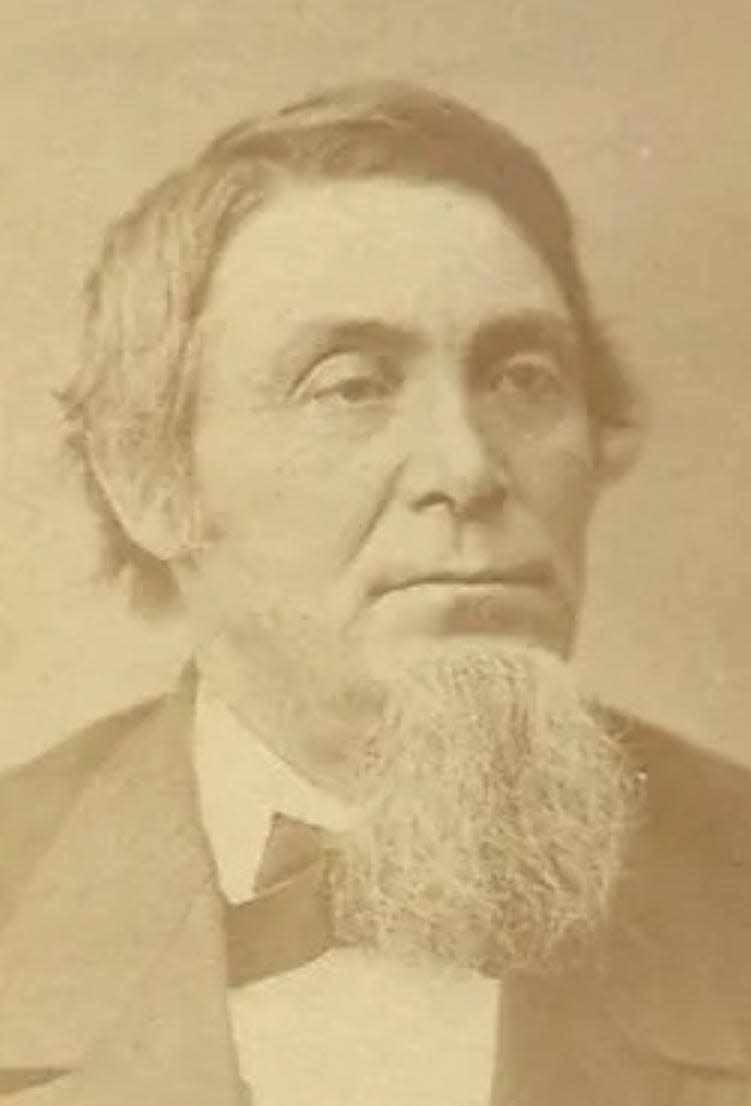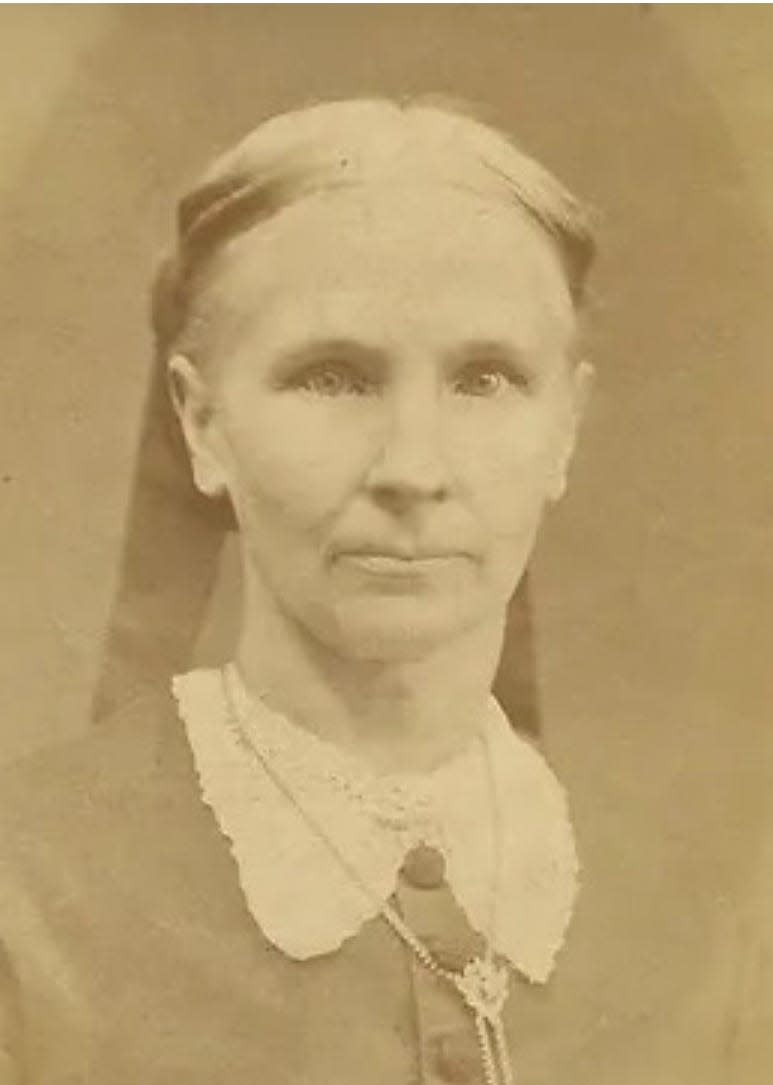Alliance's Haines House celebrates more than just the Underground Railroad

"Trailblazers, Freedom Seekers & Abolitionists! Their stories are the story of the Haines House ... an almost two-century-old home where the seminal struggle for American social justice took shape among the pioneers of the Ohio heartland."
Those are the words with which the website for Haines House Underground Railroad Museum, operated by Alliance Area Preservation Society, introduces visitors to the pioneer residence turned historical site that played a large part in the effort in the 1800s to shepherd Southern black slaves to freedom.
Over years that stretch into centuries, the site and structure of the Haines House has been the homeland of Native Americans, the farmhouse of early settlers, the refuge for slaves attempting to find freedom, a private residence and now a museum open to visitors who want to learn about its place in Stark County history.
"We've refocused our story here at the Haines House over the last several years to include more than just the Underground Railroad," said Robb Hyde, outgoing president of the board of the Preservation Society and longtime supporter of the ongoing restoration of the Haines House. "The significance of the story was that it wasn't just white people trying to help the poor suffering slaves. It was people of color, on their own, trying to figure out how to get from slave states – Kentucky, Virginia, Tennessee and North Carolina – to freedom in Canada."

Sarah Grant Haines and her husband, J. Ridgeway Haines – avid abolitionists – used their home on West Market Street in Alliance as a conduit for that pre-Civil War journey to freedom, as a strategic Stark County part of the Ohio portion of the Underground Railroad.
Land first inhabited by Native Americans
The history of the Haines House extends much farther back in time, of course, than the abolition period.
Ever sensitive to the culture of the original residents of the region, the website for the museum offers a "Land Acknowledgment."
"The Board of Directors of the Alliance Area Preservation Society and the Haines House Underground Railroad Museum recognize that the Haines House occupies part of what was the traditional homeland of Iroquois and Delaware Nations," the acknowledgement notes. "They lived here hundreds of years before John and Nancy Grant built the Haines House in 1828. We acknowledge the people who were stewards of this land and express our gratitude to them, and to their elders, past, present, and future."

Mindful that indigenous people in the area were displaced by newcomers, the Haines House museum recognizes that John Grant and Nancy Grant, among the earliest individuals to settle in Stark County, brought with them a staunch advocacy of the abolition of slavery, dedicating their lives to helping African American slaves seek freedom.
Grant built home over decades
John Grant and his daughter and son-in law, Sarah Grant Haines and Jonathan Ridgeway Haines, were enthusiastic members of the western arm of the American Anti-Slavery Society, which was located in Boston and headed by William Lloyd Garrison. Haines grew up in nearby Salem, where the western arm of the Anti-Slavery Society was based.
"The folks involved with the Society were known as Garrisonians and they were the most strict of abolitionists," said Hyde. "Their motto was 'No Union With Slavery.'"
Though John and Nancy Grant began building their home, a small house on 126 acres of land, in the late 1820s, construction and expansion continued until 1842, the Preservation Society history notes. Later, the Ridgeways, whose son John fought in the Civil War, lived in the house on what is now the west side of Alliance.
"Visitors can view the restored mid-Victorian parlor, the early 19th century kitchen, the hands-on child's room, the Grant bedroom, the attic where fugitive slaves were hidden, and the herb garden," notes the website. "Also on display are changing historical and preservation related exhibits, and a 'Timeline of Slavery and Abolitionism in the US.'"
Quoted in the website history is a recounting of the Ridgeways' Underground Railroad activity by Erma Grant Pluchel, another member of the Grant family.
"Many a fugitive slave was assisted to escape by Ridgeway Haines, his home being a station between Salem, Marlboro and Limaville. ... Many a night he stood guard gun in hand, taking care of the poor slaves he was harboring in the little attic room over his kitchen. His son, John C. or 'Tump' as he was known, a boy of 12, also stood guard and helped to drive the slaves to the next station under cover of darkness."
House honored in recent years
This century has brought the Haines House recognition for its historical significance.
In 2004, the U.S. National Park Service, following a review by scholars and park officials, recognized it as an Underground Railroad site in its Network to Freedom program. It is one of only two such sites in Stark County, the other being Spring Hill Historic Home in Massillon.
In July 2020, the Haines House was named as part of the Ohio Literary Trail, a listing presented by the Ohioana Library Association. The Alliance newspaper noted in an article published July 31, 2020, that the new statewide program "will shine a spotlight on historic locations around the state."
“We always appreciate recognition coming from the state and national level,” Hyde told The Alliance Review at that time. “I believe that the Haines House has been included in this initiative because it has served as a location in both non-fiction and historical fiction works. It is one of numerous locations noted in Ohio's definitive early Underground Railroad history by Ohio State historian Wilbur Seibert, 'The Mysteries of Ohio's Underground Railroads.'"
Then, in 2023, the website TourismOhio selected the Haines House as one of 15 sites on its Ohio Historic Underground Railroad Trail, which recognized Ohio as being on the "Main Line" of the Underground Railroad.
Hyde said the case for the Haines House earning such recognition is bolstered by the fact that large abolition meetings were held on the property on at least two occasions, in 1859 and 1860.
"This family was so involved in the workings of the abolitionist movement," said Hyde
Museum undergoing major restoration
Ohio's role in the Underground Railroad is further documented by information and artifacts housed and displayed in the Haines House since it was turned into a museum.
The Preservation Society purchased it in 2001, said Hyde. Previously, the home had been obtained and preserved by Mount Union College art instructor Eric Johannesen and placed on the National Register of Historic Places in the 1960s.
The home immediately underwent a major restoration under the guidance of the Preservation Society, but despite maintenance in recent years, the two decades of use as a museum necessitated an ongoing update that began in 2022. According to the website, work includes "restoration of the front portico; spot repointing of exterior brick and repair of selected chimneys, eaves and windows; and repair of southwest corner of the original house/old kitchen."
Hyde said that, with his term as president of the society ending soon, vice president Dalton Rininger Kline, a resident in the city since 2018, will direct the Haines House effort. He noted that Kline, an adjunct professor of design and historic preservation at the main campus for Kent State University, already has been "instrumental in keeping us on track in making sure we do the right things in renovation."
"He brings both education and professional experience in working with businesses," explained Hyde, who said he will continue to work with the society in support of Haines House and other preservation efforts when his term as president expires.
Work on the Haines House will not interfere with spring and summer tours of the facility, he said. According to the society's website, drop-in tours will begin March 2, from 10 a.m. to 1 p.m., and March 3, from 1 to 4 p.m., and will continue the first weekend of each month through November. A donation of $5 per person (children younger than 10 are free) is requested. Tours for a minimum of four people by appointment also can be requested at least 48 hours in advance by calling Ann Hendel at 330-614-2714 or Robb Hyde at 330-257-5751, or by emailing AllianceAreaPreservation@gmail.com.
School tours have increased in recent years. "We've had 500 students come through the last couple of years," said Hyde.
"Our core of 30 volunteer docents are rewarded by the reaction of everyone who comes through, particularly the students."
Reach Gary at gary.brown.rep@gmail.com. On Twitter: @gbrownREP.
This article originally appeared on The Alliance Review: Haines House in Alliance adds Civil War history to displays

